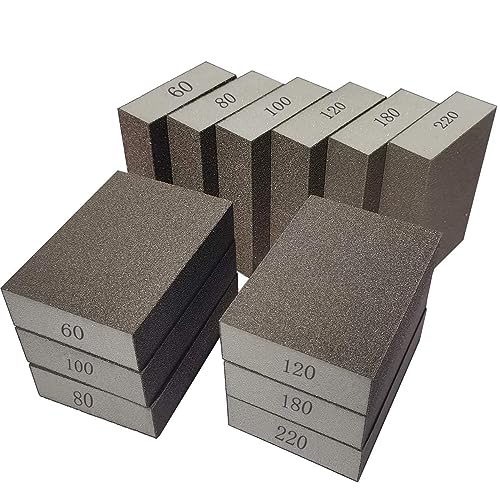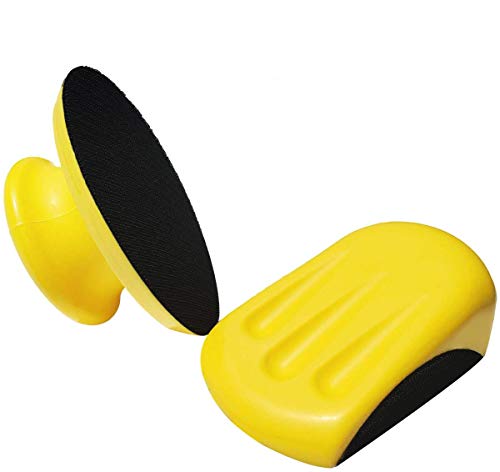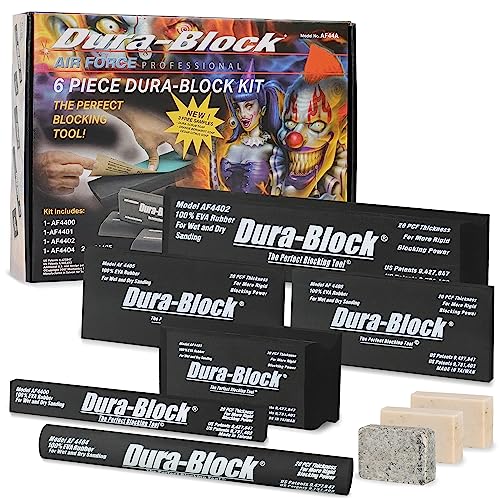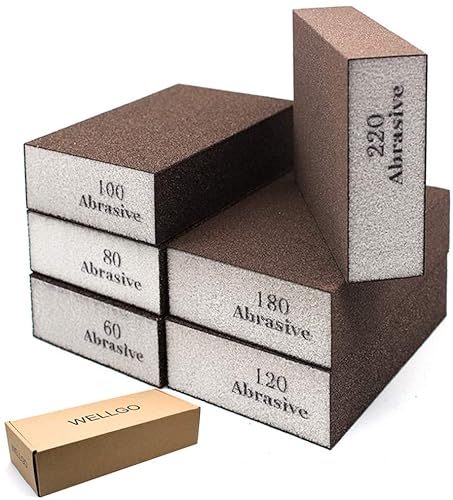The Best Sanding Blocks for Creating Smooth Surfaces
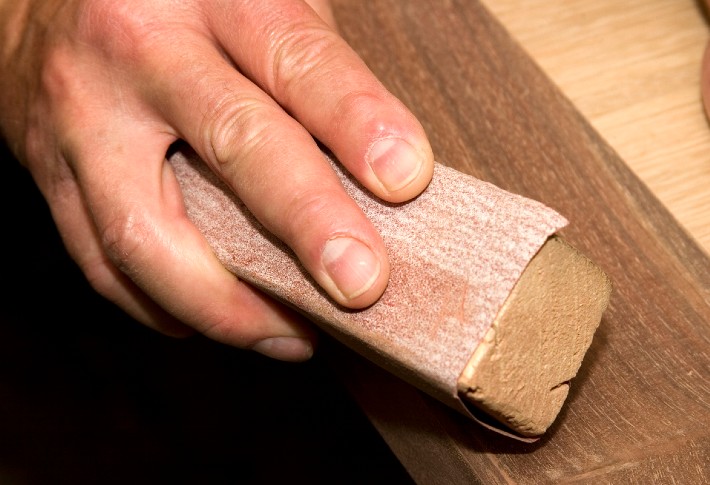
- Best Overall: Auerllcy Sanding Block Shop Now ➔
- Runner Up: Sackorange Sanding Block Shop Now ➔
- Honorable Mention: 3M Rubber Sanding Block Shop Now ➔
- Contender: Warner Manufacturing Sanding Block Shop Now ➔
- Also Consider: Tockrop 2-Pack Hand Sanding Block Shop Now ➔
- Also Consider: Dura-Block AF44A Black 6-Piece Sanding Block Shop Now ➔
- Also Consider: Wellgo 6 Pack Sanding Block Shop Now ➔
The Top Sanding Block Reviewed
Best Overall
Users will find this sanding block easy to clean and reuse. It is also simple to control, courtesy of its portable and ergonomic design.
Key Features
This sanding block comes in four grit varieties: Coarse, Medium, Fine and Superfine. The grits are printed on the blocks’ surfaces, which makes them easy to distinguish at a glance. The Auerllcy Sanding Sponge base features high-density sponges constructed from high-quality brown corundum with special treatment and unique glue formula.
Runner Up
The Sackorange Sanding Sponge can be used for sanding directly in water. Users will find it highly portable and handy too.
Key Features
The 12-Pack Sackorange Sanding Sponge has a base of high-density sponges that are durable and resilient. This sanding block comes in six grit varieties: Coarse, Medium 1, Medium 2, Fine, Superfine 1, and Superfine 2, with each grade available in two pieces. It is highly versatile as it can be used for wood, paint, metal, plastic, or drywall sanding.
Honorable Mention
This sanding block has an incredible ergonomic grip that makes it easy to handle and control. It is available in just one grit variety, but will still ensure a smooth finish.
Key Features
The 3M Rubber Sanding Block 9292 features a rubber surface for a special handling and sanding experience. This sanding block model is highly durable and will provide excellent value for money. It also features internal attachment pins that hold sandpaper securely in place and ensures consistent sanding results void of sanding waves.
Contender
Overall, this sanding block is pretty easy to handle and control. And its simple design makes it easy for users to load extra sandpaper on it.
Key Features
The Warner Sanding Block Hand Sander, 34436A, features a dimpled rubber surface that allows the sandpaper to adjust and always stay flat against the surface. The rubber surface of this sanding block also makes sanding easier, faster, and more effective. Its versatile design also allows it to sand corners, curves, and flat surfaces.
Also Consider
This sanding block is ideal for woodworking, hobby, arts and crafts, auto body, drywall, shop, and automotive use. It is very comfortable to use as it absorbs and dampens sanding vibrations.
Key Features
Tockrop 2-Pack Hand Sanding Blocks feature a backing plate made of durable and flexible polyurethane (PU). This sanding block also has a hook and loop function that prevents pad shifting and spinning and allows for quick pad changes. It is mouse-shaped and round and can be used for wet and dry sanding.
Also Consider
The best thing about this sanding block set is that it doesn’t deform after sanding. And this allows it to be applicable in multiple automobile body painting projects. With this sanding block set, you will get all you need in one package.
Key Features
This sanding block kit weighs only 4 ounces. It is black and comes in 6 different pieces. Its surface is hard but flexible, allowing it to adjust to irregular surfaces. The Dura-Block AF44A Black 6-Piece Sanding Block Set also features an ergonomic grip design, which ensures easy control and hand comfort.
Also Consider
This sanding block model is highly work-efficient and reduces water flushing, courtesy of its unique water storage function. Its design is quite ergonomic, too, as it allows easy handling and control.
Key Features
The Wellgo 6 Pack Sanding Sponges comes in six grit varieties 60G, 80G, 100G, 120G, 180G, and 200G. Its dimensions are 3.9 “x2.7″ x1”, which is quite portable for a sanding block. It is also highly versatile and can be used for various sanding operations for wood, metal, and drywall.
Best Sanding Blocks Buying Guide
Every woodsmith or professional in the construction, glass making, or plastic refining industry knows that a sanding block is an important tool to own. Sanding blocks are portable and handy, and the best ergonomic models will allow you easy handling and control. With a sanding block, you are certain of a smooth, perfect finish better than anything ordinary sandpaper offers.
The significant parts of a sanding block are the surface grits and the base. The surface grits are the different sizes of abrasive materials on the sanding blocks, and they can be coarse, medium, fine, or superfine. The base is the block on which the surface grits are attached. It is often forged out of highly durable sponges, rubber, or other artificial materials that give them perfect balance to give a fine finish. Some models come with clips that firmly attach the surface grits to the base.
Like most products, there are many models, types, and sizes of sanding blocks. And these are factors that affect the efficiency and durability of these tools, so they cannot be ignored, lest you find yourself with a shabby or unsuitable sanding block that ruins your work. This buying guide will help you with all the details you need to make the perfect sanding block purchase, so note all the talking points.
Factors To Consider Before Buying a Sanding Block
Base material
The base of the simplest sanding blocks is often forged out of wood or cork. And while these are good options, there are better options that you should explore. Consider buying sanding blocks with base materials forged out of sponges, conundrums, or rubber; these materials offer better finishing and grip comfort than wooden sanding blocks. If you will be sanding inconsistent materials or concave and convex shapes, rubber sanding blocks should be your go-to because they can bend and adjust to fit any shape or surface.
Surface grit
Sanding blocks come in various surface grit sizes, but the size you need depends on your project. To avoid the back and forth process of selecting a particular grit size, go for sanding block sets. Sanding block sets come in multiple grit sizes, including fine, coarse, fine, and superfine. Others with up to six grit sizes offer extra options that you can easily choose from.
Dual functionality
To enjoy the best value from sanding blocks, choose one with grits on both sides. That way, you can use either side of the sanding block to achieve the required finish, thereby increasing your sanding block’s functionality and resourcefulness.
Dust extraction
As you well know, sanding can get quite dusty, especially if you’re a woodsmith. This often leads to the added stress of cleaning up and wearing a mask while sanding. A simple solution to this is to purchase a sanding block with a dust extractor or suction to remove all the shavings immediately they are produced. If you’re asthmatic, getting a sanding block with dust extraction properties should be a no-brainer.
Sandpaper utilization
To avoid frequent sandpaper changing, select a sanding block that efficiently utilizes both expensive and low-cost sandpapers without wastage. Sandpaper-efficient sanding blocks can be more costly than the ordinary models, but they are worth every dime- something you will find out over time.
Application in dry and wet sanding
Wet sanding and dry sanding are two distinct operations that require different sanding blocks. However, if you often engage in both sanding operations, you should go for a sanding block that operates efficiently in both conditions.
Ergonomics
There are some ergonomic features you should consider before getting a sanding block. Here they are:
Size
The size of a sanding block has a significant effect on its functionality. If you need more sanding maneuverability or will be sanding in a relatively small area, go for a small sanding block. On the other hand, larger sanding blocks of about 7.3″ and above will allow you to apply more pressure and sand large areas within a short period, thereby saving you time and reducing fatigue.
Weight
The weight of your sanding block will determine how long it takes for you to start experiencing arm fatigue. If your sanding block is too heavy, you will experience hand fatigue within a short time, and if it’s too light, you will need to apply extra pressure, which inevitably leads to hand fatigue too. So, consider selecting a sanding block that weighs between 2.5 and 5 ounces. Sanding blocks within this range are neither too heavy nor too light and will not cause hand fatigue.
Visual clearance
Select a sanding block with a skewed back. The uneven shape of the sanding block will help you see what you’re working on a lot better and reduce the likelihood of making mistakes.
Grip
The grip of a sanding block is another ergonomic feature that you must consider. Before choosing a sanding block, make sure that it is contoured on all sides or has a padded handle. These features enable firm grips and comfort while sanding.
To find out which sanding block is the best for the project you are working on, watch this video from Stumpy Nubs:

People Also Asked
How can I make a sanding block?
A homemade sanding block is not ideal for sanding, but making one is quite simple; all you need is a block of wood and basic sandpaper. Simply attach the sandpaper to the bottom and sides of the block with glue or staple pins. Alternatively, you can hold it with your hands.
How can I clean a sanding block?
To clean your sanding block, blow some air into it to remove the shavings and dust on its surface. Afterward, soak it in warm water and wash it with household detergent. Repeat this process until the sanding block is visibly clean. Rinse the sanding block with cool running water and dry in the sun.
What is the price range of sanding blocks?
Sanding blocks are inexpensive tools that can be highly efficient if properly applied. The price of a sanding block could be anything from $1.4 to $20; it all depends on the quality of the sanding block and the presence of unique features like dust suction. There's a sanding block for every budget, but we recommend that you choose the pricey ones for extra value.
Article Contributors
The Woodsmith Review Team’s product reviews and in-depth guides are here to help you choose the best tools and gear to build great-looking projects confidently. Woodsmith is reader-supported: When you buy through links on our site, we may earn an affiliate commission. Large language models (like Artificial Intelligence) may have been used in the research and creation of the content.
Inquiries regarding specific articles or product testing should be sent to aimperiapt@gmail.com


